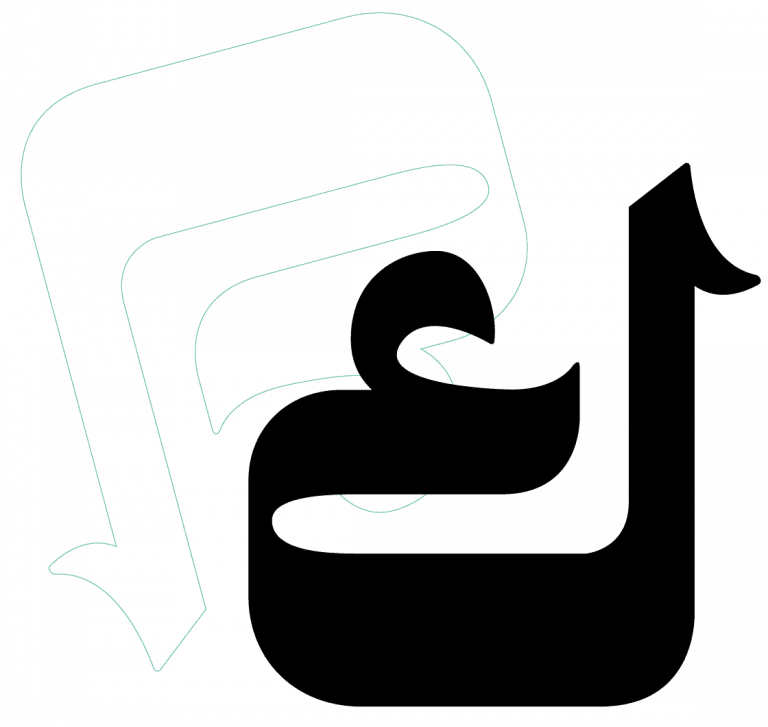Arabische Kalligraphie für Anfänger
Wann? Am 10. und 11.05.2025. Samstag und Sonntag, jeweils von 14:00 bis 17:15 Uhr.
In diesem Workshop lernen wir, die Buchstaben in der Naskh-Schrift zu verbinden,
und beginnen damit, die Wörter zu schreiben, die wir mögen.
Auch Anfänger können an dem Workshop teilnehmen,
sowie diejenigen, die bereits am ersten Anfänger-Workshop teilgenommen haben.
Kenntnisse der arabischen Sprache sind für diesen Kurs nicht notwendig.
Der Workshop umfasst insgesamt 8 Unterrichtsstunden (4 pro Tag).
Gesamtkosten für den Kurs 160 € (inkl. Kursmaterial).


Arabische Kalligrafie ist die Kunstform der Handschrift und beruht auf dem arabischen Alphabet. Sie ist im Arabischen als „khatt“ (arabisch:خط) bekannt, abgeleitet von den Wörtern „Linie”, „Entwurf“ oder „Konstruktion“.
Die älteste Form der arabischen Schrift heißt Kufi.
Aus künstlerischer Sicht ist die arabische Kalligrafie für ihre Vielfalt und ihr großes Entwicklungspotenzial bekannt und wird dafür geschätzt. In der arabischen Zivilisation wurde die Kalligrafie in verschiedene Bereiche eingebunden, etwa Kunst, Architektur, Bildung, sowie im Handwerk und nicht zuletzt auch in die Religion.
Dies führte wiederum zu einer großen Bereicherung und Weiterentwicklung der arabischen Kalligrafie.
Obwohl die meiste islamische Kalligrafie auf Arabisch geschrieben und die meiste arabische Kalligrafie wiederum islamisch ist, sind beide doch nicht identisch. Beispielsweise verwenden auch koptische und andere christliche Manuskripte auf Arabisch Kalligrafie. Ebenso gibt es islamische Kalligrafie in persischer oder in der historischen osmanischen Sprache.

Thuluth
Die geraden, eckigen Formen der Kufi-Schrift, wurden in dieser neuen Schriftart durch gebogene und schräge Linien ersetzt. In dieser Schrift neigt sich jeweils ein Drittel jedes Buchstabens, wovon sich der Name „Thuluth“, Arabisch für “Drittel“, ableitet.
Thuluth ist eine elegante, kursive Schrift, die im Mittelalter für Verzierungen von Moscheen verwendet wurde. Die Thuluth-Schrift wurde auch für Überschriften der Suren (Korankapitel) benutzt. Einige der ältesten Kopien des Korans wurden in Thuluth abgeschrieben.
Ein weiterer wichtiger Aspekt dieser Schriftart ist die Verwendung sogenannter „Harakat“, also die Darstellung von Vokallauten im Schriftbild, was auch der Verschönerung der Schrift dient. Von der Thuluth-Schrift ausgehend, haben sich durch leichte Formveränderungen verschiedene weitere Kalligrafie-Stile gebildet.
Ruqaá
Ruq’ah oder auch Riq’ah (arabisch: رقعة), ist eine Variante der arabischen Schrift, die vor allem in offiziellen Dokumenten und in der Alltagsschrift verwendet wird.
Sie ist die gebräuchlichste Schriftart des Arabischen und bekannt für ihre angeschnittenen Buchstaben, die aus kurzen, geradlinigen und einfachen Kurven bestehen, sowie für ihre geraden und gleichmäßigen Textzeilen.
Im Gegensatz zu anderen Kalligrafie-Stilen wird Ruq’ah nicht als Kunstform betrachtet. Es ist vielmehr ein funktionaler Schreibstil, schnell zu schreiben und leicht zu lesen.
Im osmanischen Reich war diese Schriftart weit verbreitet, und es wurde zur damaligen Zeit von jedem gebildeten Osmanen verlangt, Ruq’ah zu beherrschen.


Naskh
Im 11. bis zum 13. Jahrhundert waren runde Schriftarten am beliebtesten, auch weil sie von Schriftgelehrten verwendet wurden.
Die Naschi/Naskh-Schrift ist eine serifenlose Schrift. Das bedeutet, dass den Zeichen „Haken“ am Ende der auf- und absteigenden Striche fehlen. So wird z.B. das „alif“ (arabisch:أ) als gerader Strich geschrieben, der sich nach links unten biegt. Naschi/Naskh unterscheidet verschiedene Laute durch die Verwendung von diakritischen Punkten, was die Schrift lesbarer macht.
Die Naschi/Naskh-Schrift löste die Kufi-Schrift ab, weil sie leichter zu schreiben war. Während die Kufi-Schrift hauptsächlich für Verzierungen genutzt wurde, verwendeten Schreiber die Naschi/Naskh-Schrift auch für den alltäglichen Gebrauch. Naskh wurde ebenfalls zur Abschrift von Büchern und administrativen höfischen Dokumenten verwendet.
Außerdem erhielten dekorative Elemente mit dieser Kalligrafie-Schrift ein weicheres, abgerundetes Design anstelle der üblicherweise genutzten, eher kantigen Kufi-Schrift.
Kufi
Die Kufi-Schrift wurde als bevorzugte Schrift für den Koran und für architektonisches Dekor früh bekannt und diente seitdem als Vorbild für andere arabische Schriftarten.
Sie entwickelte sich aus dem nabatäischen Alphabet in Kufa, einer Stadt im Südirak, von der sich ihr Name ableitet. Die Kufi-Schrift zeichnet sich durch stark eckige, geradlinige Buchstabenformen und ihre horizontale Ausrichtung aus. Es gibt viele verschiedene Versionen der kufischen Schrift, wie z.B. quadratisches Kufi, florales Kufi, verknotetes Kufi und andere.


Persische Kalligrafie
Die persische Kalligrafie, auch Nasta‘liq (persisch: نستعليق) genannt, hat eine jahrtausendalte Tradition. Die Nasta‘liq Schrift ist eine oft sehr klein geschriebene Kursivschrift, eine Mischung aus Naschi und Taliq. Im 15. Jahrhundert wurde sie zu der am meisten gebrauchten Schrift Persiens und breitete sich nach Osten aus.
Nasta’liq ist die Schrift für den Alltagsgebrauch in Verwaltung und Wirtschaft, sie wird für Buchtitel verwendet, Schilder, Plakate und Briefe. Mit ihren schwungvollen Unterzügen, den verlängerten horizontalen Linien, betonten Rundformen und dem Fehlen von Serifen gilt sie als eine der elegantesten Schriften der persischen Sprache.
